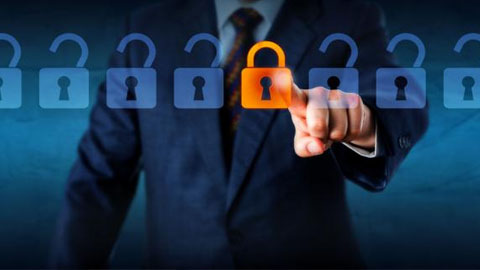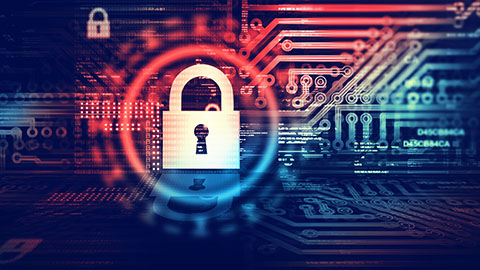Rapid developments in technology have greatly increased the risk of cybersecurity issues from all around the world. Companies, whether big, medium, or small, have been targeted by hackers primarily through malware attacks and phishing scams. As a result, business leaders are starting to realize the need to strengthen their organization’s cybersecurity measures.
In this article, we’ll list three tips or measures you can use to ensure the security within your organization.
A Growing Problem
There has been an influx of attacks throughout the years, including giants like Yahoo, Uber, and Bell, have faced numerous data breaches over the past few years. Most of these attacks came in the form of malware and phishing, where hackers attempted to steal confidential information, resulting in compromised user accounts. A CNBC report states that in 2016, cyber thieves stole 2 billion personal records and cost the global economy more than $450 billion.
Businesses are expected to face even more security challenges in the coming years. John Drzik, President of Marsh Global Risk and Digital, mentioned that the explosive growth of interconnected devices, coupled with the vastly increased scale and sophistication of attacks due to geopolitical friction, considerably heightens exposure to cyber risk. According to Cyber Ventures, damage to the global economy is expected to balloon to $6 trillion annually by 2021—more than the expected profit of the global trade of illegal drugs.
These incidents have led to increased awareness of the importance of having secure systems and structures. According to the World Economic Forum’s Global Risks Report 2018, the risk of cyberattacks was in the top 10 for both likelihood and impact.
But awareness is only half the battle. It’s important for organizations like yours to swiftly and effectively institute your own security measures to respond to the growing threat.
Develop Policies
A well-defined security policy makes sure that your organization, whatever the size, prevents security breaches. They also, in the event that such breaches do occur, provide a means to swiftly respond and contain the damage to your internal operations and your reputation to shareholders and customers.
For example, your company can implement a policy on software updates. According to Dan Skiles, president of Shareholder Service Group, hackers usually use old software to steal sensitive information.
While not every enterprise can update every piece of software to the latest version due to interoperability concerns, having a process in place to review versions, implement updates, and inform stakeholders about the necessary risks will go a long way towards protecting your information assets.
Form a Security Team
As technology has grown in complexity, so has the need for skilled workers who specialize in addressing cybersecurity threats. You’ll need people who will handle the many facets of security within your operation, including network architecture, operating system hardening, system updates, antivirus and malware protection, password strength, and penetration testing.
The security team will work hand-in-hand with management to draft and implement security policies across the organization. They have two main responsibilities, namely maintaining security monitoring tools and investigating suspicious activity.
A security team is often comprised of individuals with significant roles in cyber risk management. These roles include the Security Analyst, Security Engineer, Security Manager, and Chief Information Security Officer (CISO):
- The Security Analyst is mainly responsible for the protection of the organization’s confidential information and data. They are the ones who generate reports and handle issues that are directly related to cyber incidents. They are also the first to investigate and respond to issues and breaches.
- The Security Engineer is responsible for the development and maintenance of the organization’s IT systems. They are in charge of building solutions, maintaining tools and updating systems to ensure that their organization is well-equipped to handle threats.
- The Security Manager serves as the direct leader of the security team. They are responsible for overseeing procedures, implementing new policies and managing the security team’s everyday operations.
- The CISO is essentially the leader of the entire security team. They are the ones who are in-charge of defining and managing security operations across all levels of the organization. Moreover, they also serve as a direct contact to upper management should issues in more technical areas arise.
Establish a Security-Conscious Culture
While it’s important to invest in security policies and skilled specialists, these alone will not be sufficient without a strong security culture in place.
Organizational security is a shared responsibility. For instance, attacks like social engineering and spear phishing target specific types of workers in an organization.
Since organizational security is only as strong as its individuals, it’s imperative to establish programs to improve the security awareness and actions of every member of the organization, whether entry-level, executive, or board.
According to Kevin Beaver, an independent information security consultant, a security culture works as both a mindset and mode of operation for individuals. It sets a precedent for everyone to follow and emphasizes the importance organizations place on making sure that confidential data and information are kept safe. Moreover, it motivates the security team to do their tasks and ensures that policies and procedures are implemented properly. Without this, organizations face uncertainty in dealing with threats which may lead to an increase in security-related incidents that would be detrimental to the overall operations of the business.
Moving Forward
While concrete steps are being taken with investments in systems and infrastructures, it is still up to the people using and implementing these technologies to make sure that they are being used properly and effectively. Cybersecurity especially in the boardroom has become a big concern, and it is up to organizational leaders to address several issues surrounding it. Following these tips can help motivate companies to take a long hard look at their practices, and establish a culture that will strengthen their businesses to fight all cybersecurity threats.
Jean is a Content Marketing Specialist at Convene, with over four years of experience driving brand authority and influence growth through effective B2B content strategies. Eager to deliver impactful results, Jean is a data-driven marketer who combines creativity with analytics. In her downtime, Jean relaxes by watching documentaries and mystery thrillers.









